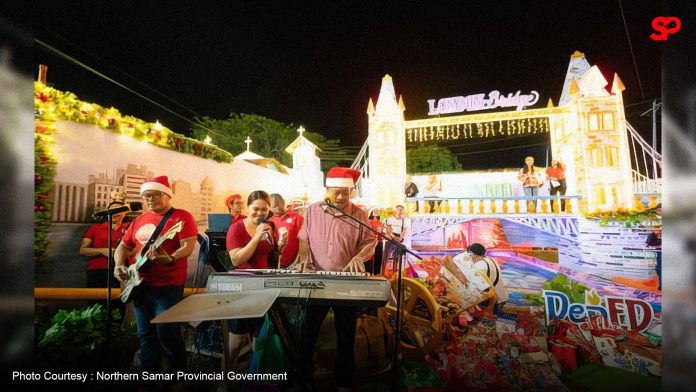By David Vera
The provincial government of Northern Samar has turned the capitol grounds in Catarman town into a nightly Christmas attraction, drawing locals and visitors to its light displays as part of this year’s Karibhungan sa Pasko (Christmas Festivities) celebration.
The holiday attraction, which opened on October 25, was briefly halted due to Severe Tropical Storm Kristine and Super Typhoon Pepito but resumed shortly afterward. It will remain open until January 6, 2025.
Highlights of the display include a towering Christmas tree, a luminous light tunnel, and booths representing 14 iconic destinations worldwide, including Hong Kong Disneyland, Hollywood, Europe, Japan, and Antarctica.
Jhon Allen Berbon, head of the Provincial Economic Development and Investment Promotions Office, emphasized the collaborative effort behind the event. “This showcases the spirit of Christmas and community in Northern Samar, where government and private groups unite to bring joy and hope to the people,” Berbon said.
The event aims to “spread holiday cheer and promote unity through volunteerism,” with contributions from various government agencies, non-government organizations, and individuals.
Northern Samar has a long-standing tradition of grand Christmas celebrations, with the capitol grounds regularly serving as a centerpiece for public gatherings during the holidays.
It must be noted however that Northern Samar, part of the Eastern Visayas region is one of the poorest provinces in the whole country. The people of the province faces significant challenges with poverty and the delivery of basic social services by the government. Recent data from the Philippine Statistics Authority indicates that the poverty incidence in Northern Samar increased to 27.5% in 2023, up from 23.1% in 2021. This is higher than the national average of 16.4%, underscoring the region’s struggle to meet basic needs. A family of five in Eastern Visayas, including Northern Samar, required an average monthly income of PhP 12, 897 in 2023 to escape poverty, but many families fell below this threshold.

